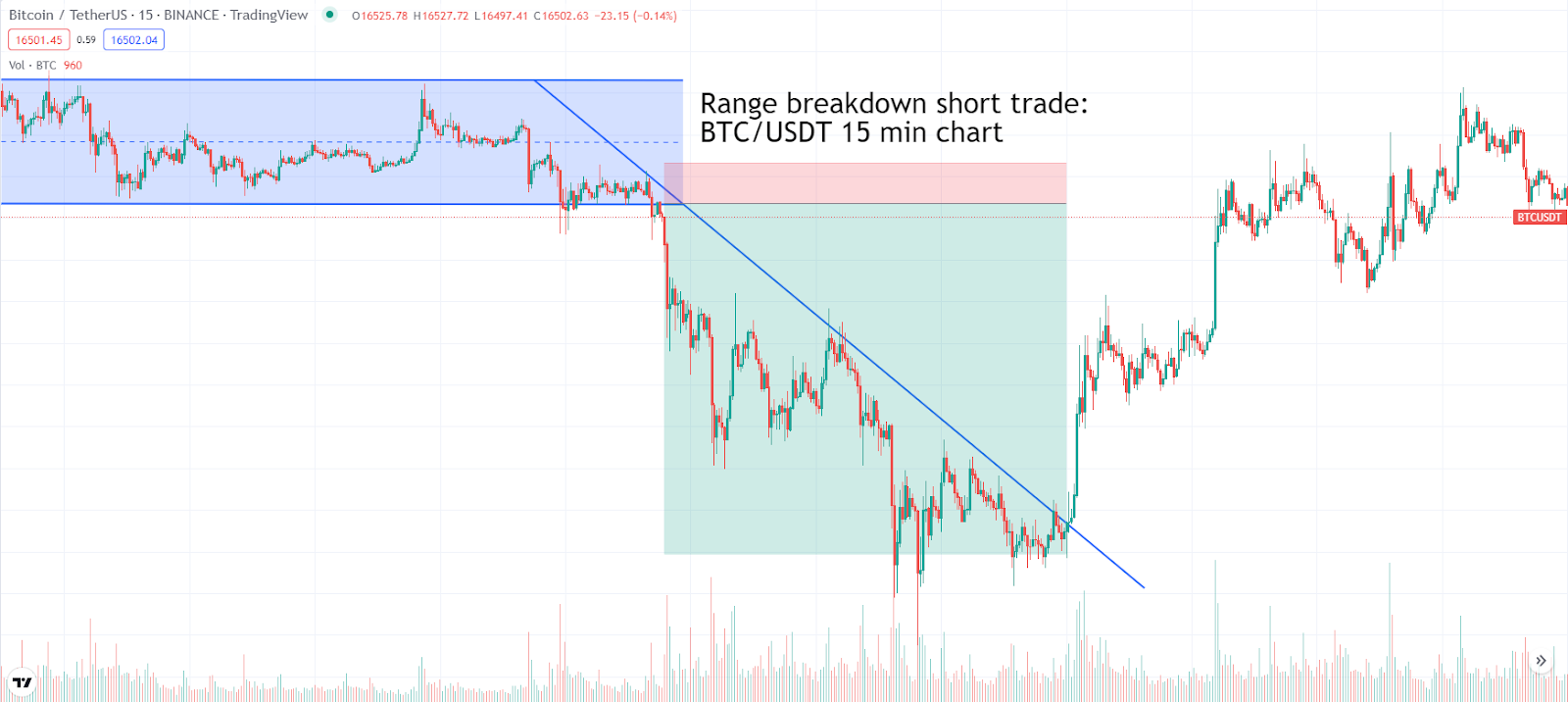-
Commitment to our readers
18 years
Helping you save money
Reviewed
by experts
Cited by
major publications
Finder maintains full editorial independence to ensure for our readers a fair assessment of the products, brands, and services we write about. That independence helps us maintain our reader's trust, which is what keeps you coming back to our site. We uphold a rigorous editorial process that ensures what we write and publish is fair, accurate, and trustworthy — and not influenced by how we make money.
We're committed to empowering our readers to make sound and often unfamiliar financial decisions.
We break down and digest information information about a topic, product, brand or service to help our readers find what they're looking for — whether that's saving money, getting better rewards or simply learning something new — and cover any questions you might not have even thought of yet. We do this by leading with empathy, leaning on plain and conversational language that speaks directly, without speaking down.
Gemini Cryptocurrency Exchange

- Buy, sell and trade 80 cryptos.
- Platform designed for traders of all experience levels
- Get $25 in Bitcoin when you trade $100 with code Finder25
Short selling is an advanced trading strategy popular across all financial markets, including cryptocurrencies. While it can be a way to profit from a downtrending market, it's not suitable for everyone.
You should have a strong grasp of trading and investing and an understanding of order types, candlestick charts, collateral and margin requirements before you get started.
Disclaimer: This page is not financial advice or an endorsement of digital assets, providers or services. Digital assets are volatile and risky, and past performance is no guarantee of future results. Potential regulations or policies can affect their availability and services provided. Talk with a financial professional before making a decision. Finder or the author may own cryptocurrency discussed on this page.
How to short Bitcoin
To short-sell Bitcoin, you'll need a trading account and a clearly mapped-out trading strategy.
- Open an account with an exchange. To short Bitcoin, you must have a trading account set up that offers peer-to-peer trading. This means there is an order book with traders posting bids and offers instead of a broker that only allows basic buying and selling.
- Understand short-selling risks. Short selling is typically associated with the use of leverage. If you plan on trading using leverage, ensure you have the appropriate risk management strategies, including stop losses, correct position sizes and adequate collateral.
- Trade execution and management. Do not enter a trade blindly. Before executing your position, you should have mapped out your entry and reason for entering, your potential profit target or targets and a stop-loss zone calculated to suit your risk profile.
- Stick to your plan. Always stick to your plan and never enter a trade blindly. Focus on mastering one set-up and strategy, such as trend trading on the 15-minute chart. This will allow you to be comfortable and confident in your executions and give you the ability to spot set-ups more regularly.
- Take breaks. Day trading and scalping are extremely high intensity and require high levels of focus. Take the appropriate breaks if you're actively trading. The crypto market never sleeps, so there's no need to feel like you're missing out.
💡 Trading tip: Many crypto exchanges offer demo or simulation trading accounts where you can practise short selling without risking any collateral.
How does shorting Bitcoin work?
Short selling is a popular trading strategy that involves selling an asset at a high price, ideally at the top of a range or resistance zone, and rebuying or closing the position as the price falls back to support, mean value or a downtrend.
Short sellers often use leverage to amplify position sizes. While this is common across crypto futures markets, leveraged trading is considered high risk and not recommended for beginners.
Many traders use technical analysis, charting patterns and indicators to assist this process and help understand when the market is overextended and due for a correction or likely to be rejected by a resistance zone and met by strong selling pressure.
Shorting Bitcoin can be done through a variety of different methods, including the following:
- Spot margin. Margin trading allows you to borrow assets and trade with more than you hold. Your assets, for example, BTC or USDT, are held as collateral. If the market moves against you and a threshold is reached, you will receive a margin call – the broker will start selling your assets to cover losses and borrowing fees.
- Futures trading. Shorting futures works similarly to spot margin in that it allows for leverage. However, unlike margin trading, you are not required to hold Bitcoin as collateral, nor are you trading physical Bitcoin. Instead, you are buying/selling a contract representing BTC and speculating on its future price.
Short selling can help you to capitalize on bearish trends, pullbacks and trade mean-reversion set-ups.
It can be done on any time frame from the 1-minute chart to the weekly and is suitable for a range of trading styles, including scalping and swing trading.
Can you short Bitcoin in the US?
Traders looking to sell Bitcoin and rebuy for a profit can do so on any centralized or decentralized exchange that supports BTC margin or leveraged trading.
Futures trading, CFDs and shorting on leverage are not allowed in some jurisdictions due to regulatory restrictions.
If you plan on shorting BTC, trading on platform that is registered with is recommended. These exchanges often have better security measures in place and even insurance policies in the event of a hack or stolen funds.
What you need to know before shorting Bitcoin
Shorting any market and trading on leverage can be complicated and is considered high risk. Before shorting Bitcoin, familiarize yourself with the following concepts and tools to help better understand what's happening behind the scenes of your trade.
Leveraged short trade example:
You open a short position on BTC/USDT. You use $1,000 USDT as collateral and leverage it 10x, short selling $10,000 worth of BTC.
If BTC falls 10% and your profit target is hit, you stand to make approximately $1,000.
(10% of your initial investment * 10x leverage minus any exchange/borrowing fees).
However, if the price of Bitcoin rises by about 9% and your maintenance margin threshold is exceeded, your position will be liquidated incrementally, potentially leaving you with nothing.
To avoid liquidation, always remember to use a stop loss. Stop losses for short trades are often placed above the previous swing high. Swing highs will differ drastically based on your trading time frame and current market volatility. Calculate stop losses prior to entering the trade by using a PnL calculator or a percentage price measurement tool.
Short set-up chart example:

Bitcoin breaks down from a trading range on the 15-minute chart. Enter position with a stop loss placed above the range low. Depending on your trading strategy, you could take profits at numerous targets, including a test of the next support zone, the tag of a moving average or the break above the downtrend line and the signal of a momentum shift.
Key short-selling considerations:
- If you are trading futures, you are not trading BTC, merely a contract speculating on its future price.
- If you are trading margin, you are trading physical BTC with additional funds borrowed from the exchange. Your USDT or selected crypto balance will be used as collateral.
- Maintenance margins and liquidation zones will differ depending on whether you choose a cross or isolated margin.
- Stop-loss placement can be difficult, and there is no perfect stop-loss position. Consider using an indicator such as the Relative Volatility Index (RVI) to calculate the average price swings over a selected time frame and plan your exits accordingly to current market conditions.
Common ways to short Bitcoin
You can short Bitcoin in many different ways depending on your risk profile and preferred trading strategy. We've covered some of the most popular options below:
1. Futures market
Futures contracts are a form of derivatives that allow traders to speculate on an underlying asset's price movement without holding the asset itself. They are often traded using leverage, meaning profits and losses are amplified.
There are 2 main types of future contracts. While they are similar, there are key differences that should be noted and understood.
Quarterly futures contracts have a fixed expiration date of 3 months. If this date is reached and you're still holding size on your trade, your position will be forcibly closed by the exchange regardless of whether it is in profit or loss.
Perpetual futures contracts, or "perps" are the most popular way to short Bitcoin, with billions of dollars' worth of futures contracts bought and sold daily. Perps are traded the same way as regular futures, with the main difference being that the contracts do not have an expiration date and can be held indefinitely.
Futures and leveraged trading are recommended for advanced users. Mismanaged trades have the potential to unravel quickly and your collateral can be liquidated (taken by the exchange to cover losses).
Pros
- Perpetual futures contracts can be held indefinitely.
- Gain exposure to Bitcoin without having to hold the physical asset.
- Profits can be amplified by using leverage.
- Only a small amount of capital is required to start trading.
Cons
- Mismanaged trades can end in liquidation.
- Leverage trading is high intensity and can cause stress and pressure – losses are inevitable.
- Slippage and trading fees can reduce profit margins if not properly accounted for.
2. Spot margin trading
Getting started with spot margin trading is simple and can be used to amplify your profits using leverage. Keep in mind that this works both ways, and losses will depend on how you manage your risk and stop loss.
Once you have opened and funded a margin account, you can borrow collateral and start trading. Most exchanges offer 3–10x leverage. You will see some exchanges that offer more than that, but these should be reserved for experts only, as every additional point of leverage increases your risk.
Assume you have a $10,000 account size and leverage it 3x – you now have $30,000 to use for your trades.
If you sell 1 BTC for $30,000 and the price decreases to $27,000, you stand to make about $3,000 profit, as opposed to $1,000 if you had not leveraged your account.
Inversely, if the price of Bitcoin rises and you do not have a stop loss in place, your entire trading account could be forcibly closed and your collateral liquidated.
Borrowing fees, trading fees and slippage should also be considered when trading spot margin.
Pros
- Profits can be amplified when trades are successful.
- You can hold the BTC you're trading as collateral – unlike derivatives.
- Simple to get started and supported by most tier-1 exchanges.
Cons
- Access to less leverage than futures trading platforms.
- Borrowing rates can add up for long-term trades.
- Mismanaged trades can be liquidated.
3. Using Bitcoin CFDs
The key difference is that CFDs are settled in fiat currency, not digital stablecoins or cryptocurrencies such as USDT or Bitcoin.
CFDs are traded through traditional financial brokers rather than on centralized or decentralized cryptocurrency exchanges. They are considered high-risk investment vehicles and should only be used by experienced traders.
A popular CFD trading strategy is what's known as hedging – holding both long and short positions simultaneously. If you're holding an open futures long position, you could short Bitcoin CFDs hedging your trade and mitigating risk. If the trade is managed correctly, one position will remain in profit regardless of market conditions.
However, hedging is a complicated strategy and not recommended for beginners as it typically does not involve a stop loss. Calculating risk can also be complicated.
Pros
- Trades are settled in fiat currency, removing the need for crypto wallets and on-chain transactions.
- Bitcoin CFD short trades can be used to hedge open long positions.
Cons
- Bitcoin CFDs are traded via centralized brokers and are a high-risk form of trading.
- Unlike perpetual futures, CFDs have an expiry date and cannot be held indefinitely.
4. Binary options
Options are derivatives contracts that come in 2 forms: calls and puts. Put options allow you to short Bitcoin by speculating that the price will drop, similar to a futures trade.
However, unlike futures, losses are limited to the purchase price of the options contract and cannot rise or fall indefinitely.
To short Bitcoin, you would purchase a put option that would give you the option, but not the obligation to sell Bitcoin at today's price at a later date. The purchase price is referred to as the strike price.
Options are often used to hedge positions – trade both long and short positions simultaneously to help mitigate risk.
Options can be complicated and are recommended for advanced traders or those with a background in traditional financial instruments.
How to trade optionsPros
- Losses are capped at the option purchase price.
- Options can help mitigate risk by hedging positions.
- Bitcoin strike prices typically run in $500 increments trading at whole values can simplify calculations.
Cons
- Opening an options position is not the same as using a typical limit or market order type and can be complex.
- There are not a lot of trading platforms for crypto options.
- Mismanaged options trades can result in losses and expiry.
5. Leveraged tokens
Leveraged tokens are derivatives that traders can hold on crypto spot markets rather than futures-only exchanges.
Leveraged tokens represent a basket of perpetual contracts and move based on futures price fluctuations.
Unlike futures or margin trading, leveraged tokens allow you to short Bitcoin and other cryptocurrencies without the risk of liquidation or the need to monitor a maintenance margin.
By purchasing a BTCDOWN leveraged token, you can short sell with a targeted leverage range between 1.25x and 4x, helping to maximize profitability on downtrends and minimize losses during uptrends.
If the price of BTC falls, BTCDOWN will add leverage in an attempt to increase profits. Inversely, if BTC rises in price, your leveraged token will auto-rebalance, reducing the margin to cap losses and avoid liquidation.
Pros
- Trade on leverage without the risk of liquidation.
- Auto rebalancing leveraged positions amplify profits and minimize losses automatically – proper risk management and stop losses should not be discounted.
- Leveraged tokens can be used to hedge futures market trades and mitigate risk.
- Variable target leverage offers reduced volatility when compared with traditional leveraged trades.
Cons
- Leveraged tokens mitigate some of the risk of a leveraged trade – they do not eliminate it and should be traded with the same risk management as any other strategy.
- Leveraged tokens can be complicated to understand and are recommended for advanced traders.
- Leveraged tokens are not available on all crypto exchanges.
6. Short selling BTC on the spot market
Short selling Bitcoin requires holding BTC on the spot market instead of using collateral such as USDT for leveraged trading.
As it is not a derivative market, it does not allow for leverage and is the lowest risk, lowest reward strategy. Spot traders can sell and rebuy Bitcoin for substantial gains if done correctly.
Spot market short-sellers are typically those who are holding Bitcoin long term. They will ride the trend up, sell near the top and rebuy for a gain or accumulate additional BTC as the market corrects. This may also be referred to as swing trading.
Although liquidation is not a concern, if the market moves against you, you may be forced to purchase BTC at a higher price than you sold it for.
Pros
- No risk of liquidation
- No funding fees
- Hold the physical asset rather than a contract representing its price
- Can opt to accumulate more of an investment or take profits in stablecoins
Cons
- Leverage trading is not available
- Spot market fees are typically higher than futures
- Must have the capital available to make the initial investment
- If the market moves against you, you may have to purchase at a higher price
What does it cost to short Bitcoin?
Taking a short position and the associated cost will depend on the exchange you choose to use and its fee structure.
Typically, taker fees are higher than maker fees as you're removing liquidity from the market instead of providing additional tradable funds.
Another consideration when trading on leverage is liquidation fees. This is the percentage the exchange charges as a penalty for exceeding your margin ratio. Liquidation penalties vary depending on exchanges. They are typically high, often 5% or more.
Market volatility and risk management are the most important factors when taking any trade. Only open a position with an exit strategy or stop loss set at an amount you're willing to risk.
When is the right time to short sell Bitcoin?
There is no 'perfect set-up' for short selling, but there are some things to consider when planning your trades.
- Choose a time frame. This is an important factor when trading any market. A move on a 1-minute chart that looks over-extended will most likely appear insignificant on a higher time frame such as the 1- or 4-hour chart. Choose a time frame and trade accordingly – perspective is key.
- Patience. Crypto markets are volatile, so there's usually a trading pair experiencing price action. However, if the market is slow or your ideal set-up isn't there, don't rush into a trade.
- Stick to your plan. Traders often lose money because they don't follow a structured trading plan. Practice set-ups on small sizes and figure out what works for you. If you find that mean reversion on short-term time frames works, then master that. If you're happy to wait a few days or weeks for a trade to play out, then learn more about technical analysis and swing trading.
- Risk management. This is especially important when trading using leverage. Poor risk management can result in losing your entire account balance or "blowing up". It's good practice to use stop losses and plan how much you're willing to risk before entering a trade.
How is shorting Bitcoin different from investing?
Investing and shorting Bitcoin are different styles of trading.
Investors hold long positions, generally on spot markets or low-leverage position trades. Investors often trade without stop losses as the chance of liquidation for a low-leverage position is decreased. Spot market trades can fall drastically, but without leverage, there is no chance of liquidation.
Bitcoin short traders open positions, typically on leverage, expecting the price of BTC to fall or trend down. If the trade plays out favorably, the position is closed and a profit is realized. If the position runs offside, a stop loss should be placed and triggered to avoid substantial losses.
How to buy BTCRisks of short selling Bitcoin
Trading Bitcoin comes with high risk, especially when leverage is added to a position. Things to consider before short selling Bitcoin include:
- Market volatility. Crypto markets are prone to large price swings. Use an indicator such as the Relative Volatility Index to help assess the average swings. Size your positions and place your stop losses in accordance with price action.
- Account size. If you're planning on opening a large position using a market order, you may experience slippage (the order being filled at a higher price than expected). Double-check the market's liquidity or scale into positions slowly.
- Exchange. It is safer to trade on a -registered exchange that offers a proof of reserves balance sheet or a DeFi platform that has been audited and has not experienced a hack.
- Leverage used. Over-leveraged positions have the potential to go offside quickly. Make sure you've calculated your risk and know how much you're prepared to lose. Losses are inevitable. Do your best to remove emotions from trading.
- Liquidation fees. Liquidation fees are much higher than trading fees (often upwards of 5%). Keep an eye on your maintenance margin and margin ratio. Close your trade, or post more collateral before liquidation occurs to avoid paying unnecessary fees.
Bottom line
Trading and investing of any kind have associated risks. Digital assets are considered especially risky as they are often more volatile than traditional assets, including high market cap stocks, FX and precious metals such as gold.
The risks of trading cryptocurrencies are amplified when using leverage. If trades are mismanaged, losses can quickly accumulate. Before short selling Bitcoin, it is important to have a firm grasp of trading spot markets, investing, volatility, margin and risk management.
Many exchanges offer demo trading accounts to help you understand the fundamentals before trading using your capital.
Disclaimer: Cryptocurrencies are speculative, complex and involve significant risks – they are highly volatile and sensitive to secondary activity. Performance is unpredictable and past performance is no guarantee of future performance. Consider your own circumstances, and obtain your own advice, before relying on this information. You should also verify the nature of any product or service (including its legal status and relevant regulatory requirements) and consult the relevant Regulators' websites before making any decision. Finder, or the author, may have holdings in the cryptocurrencies discussed.
Whether products shown are available to you is subject to individual provider sole approval and discretion in accordance with the eligibility criteria and T&Cs on the provider website.
Are you visiting from outside the US?
Ask a question
More guides on Finder
-
What are Binance futures and how do they work?
Learn what crypto futures contracts on Binance are and how to trade them.
-
How to trade futures on Binance — A beginner’s guide
Learn how to trade crypto futures contracts on Binance.
-
Binance futures fees explained
Learn how to calculate fees for trading Binance futures contracts.
-
How to day trade crypto
Day trading crypto involves making short-term trades to take advantage of small price fluctuations.
-
A Beginner’s Guide to Bitcoin and Cryptocurrency ETFs
If you’re looking for ways to gain exposure to bitcoin and other digital currencies, cryptocurrency ETFs could be worth exploring. Find out what crypto ETFs are and how they work in this introductory guide.
-
Compare cryptocurrency trading bots
Your detailed guide to cryptocurrency trading bots, how they work and the benefits and risks you need to consider when choosing a crypto trading bot.
-
A beginner’s guide to cryptocurrency funds
Your guide to cryptocurrency funds, how they work and the potential benefits and risks they offer.
-
Cryptocurrency arbitrage made easy: A beginner’s guide
A beginner’s guide to cryptocurrency arbitrage, how it can help you take advantage of crypto price differences, and the risks you need to be aware of before you start trading.
-
A guide to bitcoin futures trading
Find out what exactly bitcoin futures trading is, where to get started and how to pick the right trading site.







